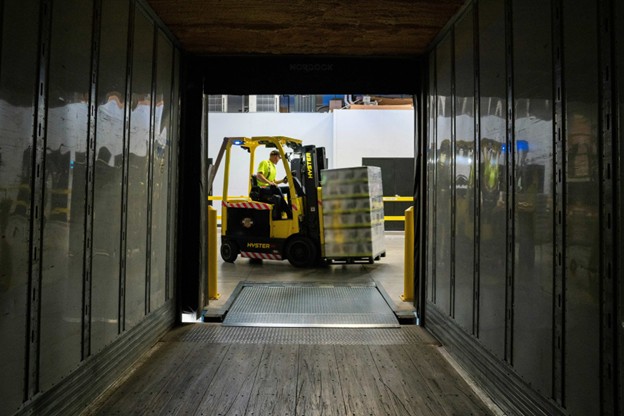Is Operator Fatigue Putting Your Warehouse at Risk?
Operator fatigue is a silent risk that can have serious consequences in busy warehouse environments especially where forklifts are in operation. But how real is the threat? And what can you do to protect your people and your productivity?

Understanding Operator Fatigue
Forklift operator fatigue refers to a state of physical or mental exhaustion that reduces a worker’s ability to perform tasks safely. It’s more than just feeling tired fatigue can compromise focus, reaction time, awareness, and decision-making ability, making it a serious workplace hazard.
In high-risk environments like warehouses and manufacturing facilities, the consequences of fatigue can be severe. From collisions and near misses to damaged goods and injury, the risks are too significant to ignore.
What’s Causing Fatigue in Your Warehouse?
Several factors contribute to fatigue among forklift operators, including:
- Inadequate sleep or irregular sleep patterns
- Long shifts or excessive overtime
- Stress and mental overload
- Noisy, uncomfortable, or poorly lit environments
- Rough or bumpy ride conditions
- Poor ergonomics in forklift design
In a warehouse setting, fatigue can be amplified by loud noise levels, repetitive tasks, and constant physical strain. When left unaddressed, it can quickly lead to costly mistakes or worse, serious incidents.
Warning Signs to Watch Out For
Recognising early signs of fatigue is key to prevention. Keep an eye out for:
- Difficulty concentrating or focusing
- Frequent errors in task performance
- Slowed reaction times
- Blurred vision or drooping eyelids
- Muscle aches or general weakness
- Mood swings or irritability
If any of these signs are observed, action should be taken immediately to ensure the safety of the operator and those around them.
The Safety and Business Impact
Fatigue isn’t just a health and safety issue it’s a business risk. A fatigued forklift operator may:
- Miss visual or auditory cues (like a co-worker calling out a warning)
- Fail to notice mechanical issues with the forklift
- Cause accidents that result in injuries, delays, or damage
- Reduce overall warehouse productivity
Even a single fatigue-related incident can halt operations, lead to costly downtime, and impact staff morale.
What Are Your Responsibilities as an Employer?
Employers have a legal duty to manage workplace hazards including fatigue. This includes:
- Identifying fatigue-related risks (like long shifts, noise, or poor ergonomics)
- Taking steps to eliminate or minimise those risks
- Encouraging open communication about fatigue-related concerns
- Ensuring workers are adequately trained, licensed, and fit for the job
Under the National Employment Standards (NES), employers should not routinely require full-time employees to work more than 38 hours per week, unless additional hours are reasonable. Safe Work Australia also mandates that only licensed and competent individuals may operate forklifts.
Strategies to Reduce the Risk of Fatigue
Every warehouse is different, and so are your people. That’s why a tailored approach to fatigue management works best. Consider implementing:
- Regular check-ins with staff to discuss challenges and workload
- Noise reduction solutions like noise-cancelling headphones
- Lighting upgrades for better visibility
- Ergonomic seating and vibration-reducing floor mats
- Break scheduling based on task intensity, not just time
- Training on recognising fatigue and how to respond
Encouraging a culture where it’s safe to speak up about fatigue is just as important as the physical changes you make.

Safer Warehouses Start with Smarter Design
Fatigue-related accidents often occur due to poor visibility or layout issues. Make sure your warehouse supports safety by:
- Reducing pedestrian and vehicle interaction zones
- Installing clear signage, floor markings, and warning systems
- Creating designated low-speed and parking zones
- Using technology like AI Vision Assist, which helps alert operators to nearby pedestrians in real time
These design enhancements don’t just reduce fatigue they also help prevent the cognitive overload that can contribute to it.
